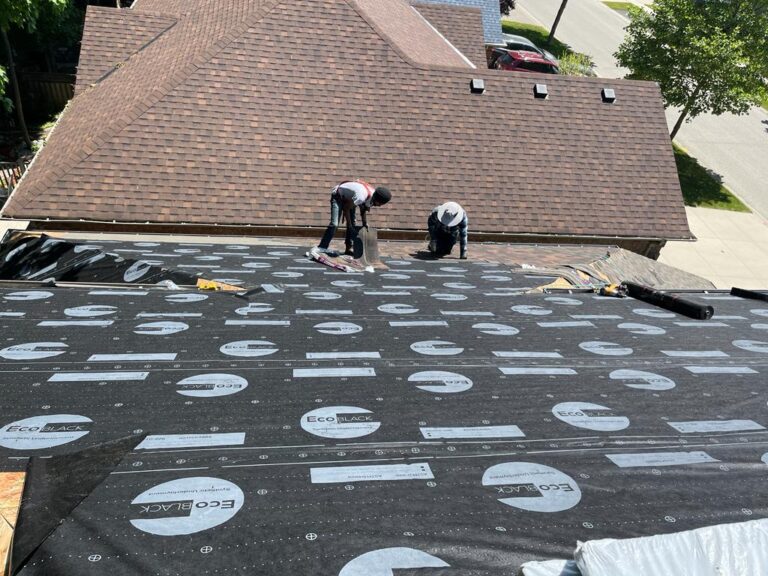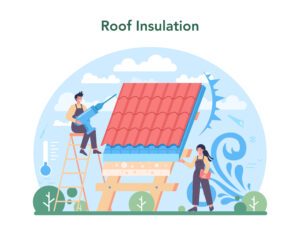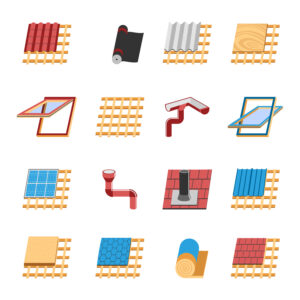New Roof Installation

Roof construction worker. Building fixing and house renovation. Rooftop tile applying with labor equipment. Roofer men with work tools. Isolated flat vector illustration
A new roof is a big investment and one that should be done correctly. The right roof can last decades and add to your home’s value.
A new roof can reduce energy costs, and there are many programs available for homeowners with lower incomes to cover the cost of home repair.
Cost
 There are a number of factors that can affect the cost of a new roof. These include the shingle type and materials, roof size, and location.
There are a number of factors that can affect the cost of a new roof. These include the shingle type and materials, roof size, and location.
Homeowners should also consider the possibility of applying for a home improvement grant.
The majority of a new roof’s cost comes from labor. The labor rate depends on the size of the house and its complexity. For example, a roof with dormer windows and a chimney requires additional labor and flashing. Skylights also add to the cost, as they must be properly sealed.
Other costs include the cost of building supplies and permits. Obtaining a permit may take weeks and increase labor rates, as building inspectors must check the work for safety and compliance. HOAs may also require pre-approval of shingle color or style.
It’s important to note that removing the old roof is a significant part of the new roofing process. Homeowners should budget for this part of the project, which can be $1 to $5 per square foot.
Ideally, homeowners should replace the entire roof at once. This is beneficial for a consistent appearance and meeting local building codes. However, if only one area of the roof is damaged or in need of replacement, a partial roof is an option as well. Homeowners should ask their contractors about the options available to them.
Materials
 Roof construction with various mounting structures and insulation layers flat icons collection abstract isolated vector illustration
Roof construction with various mounting structures and insulation layers flat icons collection abstract isolated vector illustration
Roofers4U goes beyond shingles and roof tiles, ensuring a comprehensive installation, there are several other materials that can be used in a new roof installation. These include underlayment, drip edge, and flashing. The underlayment is a water-resistant barrier that is installed on the roof decking before shingles are applied. It is secured to the sheathing with cap nails every four to six inches along the edges and spread out more towards the middle. The drip edge and flashing are strips of metal that prevent water from seeping under the shingles. They are installed in the corners of the roof and near the soffits.
Additional Costs
Another important factor in the cost of a new roof is the type of material used. There are many options available, including dimensional shingles for extra curb appeal, three-tab shingles for the best value, wood shakes and slate tiles for a natural look, and metal roofing for durability and low maintenance costs. Some roofs are made from recycled material, which can reduce the environmental impact of the project.
Roofers4U provides transparent pricing, including any applicable taxes, fees, and waterproofing coatings. These may include dump fees if the old roof is torn down and disposed of. These fees vary by region. Also, many roofers will add a waterproofing coating to the job for an additional fee. This is an important step, as it will protect the underlying layers of your home from moisture and can increase the tax basis on your property.
Expert Installation
If you are looking to replace your old roof, you’ll want to hire professional roofing contractors i,e Roofing4u. We will be able to give you an accurate expectation of the project, and we can help you make decisions about the materials. We will also know how to install the new roof properly, reducing the likelihood of leaks and damage in the future.
You can find our local roof installation company in Toronto online or through the phone book. Once you’ve found us we will provide you with a written contract and a 72-hour right to cancel.
Roofing contractors in Toronto must obtain a permit before beginning work on your home’s roof. This process typically involves submitting specific information about the type of roofing material and measurements. The permit application is then reviewed by a building inspector who ensures that the construction meets state safety standards.
Before the roofing crew arrives, you should clear away toys and furniture and move any other items that are in the area. This will prevent them from tripping over these items and it will also keep them safe from falling debris. It is a good idea to remove wall decorations as well because the vibrations caused by hammering can cause them to fall and break.
Warranty
A good roofing company will offer a warranty to cover the new roof for at least a couple of years. These warranties are usually a combination of a manufacturer’s warranty covering the materials and a contractor’s workmanship warranty covering the installation. The warranty should be clearly spelled out to determine what the value is that you are getting. It should include a no-dollar limit manufacturer’s warranty and a labor and material warranty. Using any other materials other than the ones that are approved by the manufacturer can void the warranty, so be sure to ask what is covered.
A contractor’s workmanship warranty typically covers leaks that are caused by the roofers during the installation process, but this isn’t a comprehensive warranty. It excludes any damage that can be traced back to the homeowner, such as ice damming or improper step flashing. It also doesn’t cover any damages that are related to storm damage or acts of nature, such as tornadoes.
A manufacturer’s system warranty is a more comprehensive guarantee of the quality of the products that are used in a roof. It is typically offered for decades, but there are some conditions that must be met to obtain it. These conditions may include the use of certified contractors, a transferable warranty, and other requirements that must be fulfilled. It also excludes leaks that are caused by non-manufactured components such as flashing, shingles, pitch pans, coping metal, and other roof penetrations.
